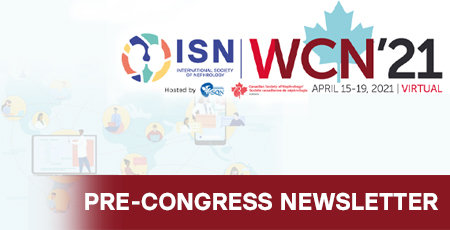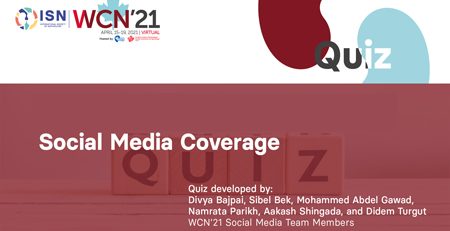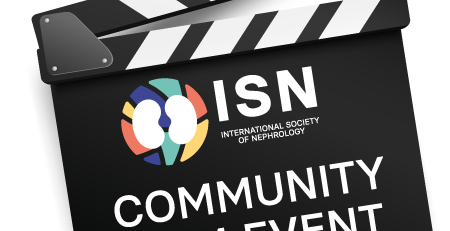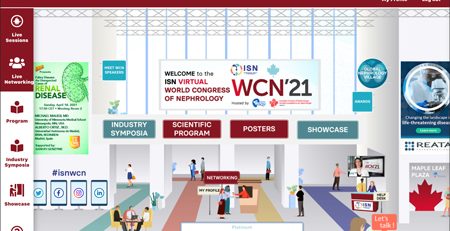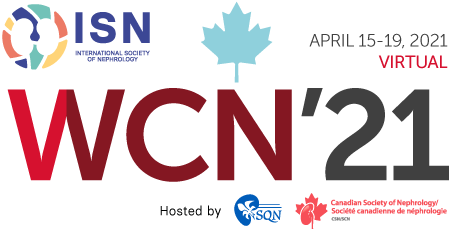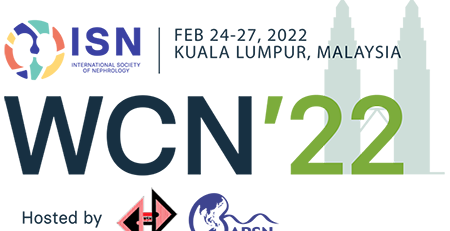Prompt identification and treatment of pre-eclampsia and acute kidney injury needed to improve disease burden
 “Pre-eclampsia is thought to be the most common glomerular disease worldwide, affecting up to 5% of pregnancies, and up to 11% of women have pregnancies complicated by hypertension,” says Dr. Kate Bramham. “Hypertensive disorders of pregnancy have now become the leading cause of pregnancy-associated acute kidney injury, and its incidence is rising in both high- and low-income countries.”
“Pre-eclampsia is thought to be the most common glomerular disease worldwide, affecting up to 5% of pregnancies, and up to 11% of women have pregnancies complicated by hypertension,” says Dr. Kate Bramham. “Hypertensive disorders of pregnancy have now become the leading cause of pregnancy-associated acute kidney injury, and its incidence is rising in both high- and low-income countries.”
Pre-eclampsia can not only cause acute kidney injury (AKI), but AKI can also increase the risk of pre-eclampsia in subsequent pregnancies. In addition, pre-existing kidney disease can increase the chances of developing both pre-eclampsia and AKI. The interweaving of these factors presents challenges to health professionals caring for pregnant women, Dr. Bramham will say in her talk at WCN’21. This is particularly the case in low-income countries.
“The burden of pregnancy-related AKI due to hypertension remains in low-income countries,” she says. “Urgent strategies are needed in order to enhance management.”
Around 46,000 women and 2.5 million babies die before or soon after birth due to placental disorders every year worldwide, and more than half of these deaths occur in low-income countries.
“In addition, about 50 million women and babies will have their short and long-term health altered because of these complications,” says Dr. Bramham, a consultant nephrologist and senior clinical lecturer in the Department of Women and Children’s Health at King’s College London (UK).
The key to avoiding these problems is identifying pre-eclampsia as soon as it occurs and diagnosing AKI at an early stage. However, early recognition of AKI is complicated by changes in serum creatinine levels that occur as a result of pregnancy. The “Kidney disease: Improving global outcomes (KDIGO) clinical practice guideline for AKI” cannot be used reliably in this context.
“The KDIGO AKI criteria have not been validated in pregnancy, and our recent work suggests that they may not be applicable in this setting,” says Dr. Bramham. “Fluid balance assessment is challenging in women with cardiac and endothelial dysfunction.”
In order to ensure that women with AKI receive proper management and follow-up, Dr. Bramham believes that health care professionals working in obstetrics and gynecology may require further training. In addition, she says more research is needed into preventive strategies to reduce the risk of renal and cardiovascular complications in women who have suffered AKI during pregnancy.
She concludes: “Pregnancy-associated hypertension may also indicate more rare and sinister diagnoses including thrombotic thrombocytopenic purpura and atypical hemolytic uremic syndrome. Prompt diagnosis is essential in order to prevent maternal and neonatal death and long-term morbidity.”
Dr. Kate Bramham: “Pregnancy-associated hypertension and pre-eclampsia” Theme Symposium on “Acute kidney disorders and pregnancy – From the common to the critical,” Sunday, April 18, 12.30-14.00 hrs Montréal (Canada) time:
https://cm.theisn.org/cmPortal/searchable/WCN2021/config/normal#!sessiondetails/0000013730_0

